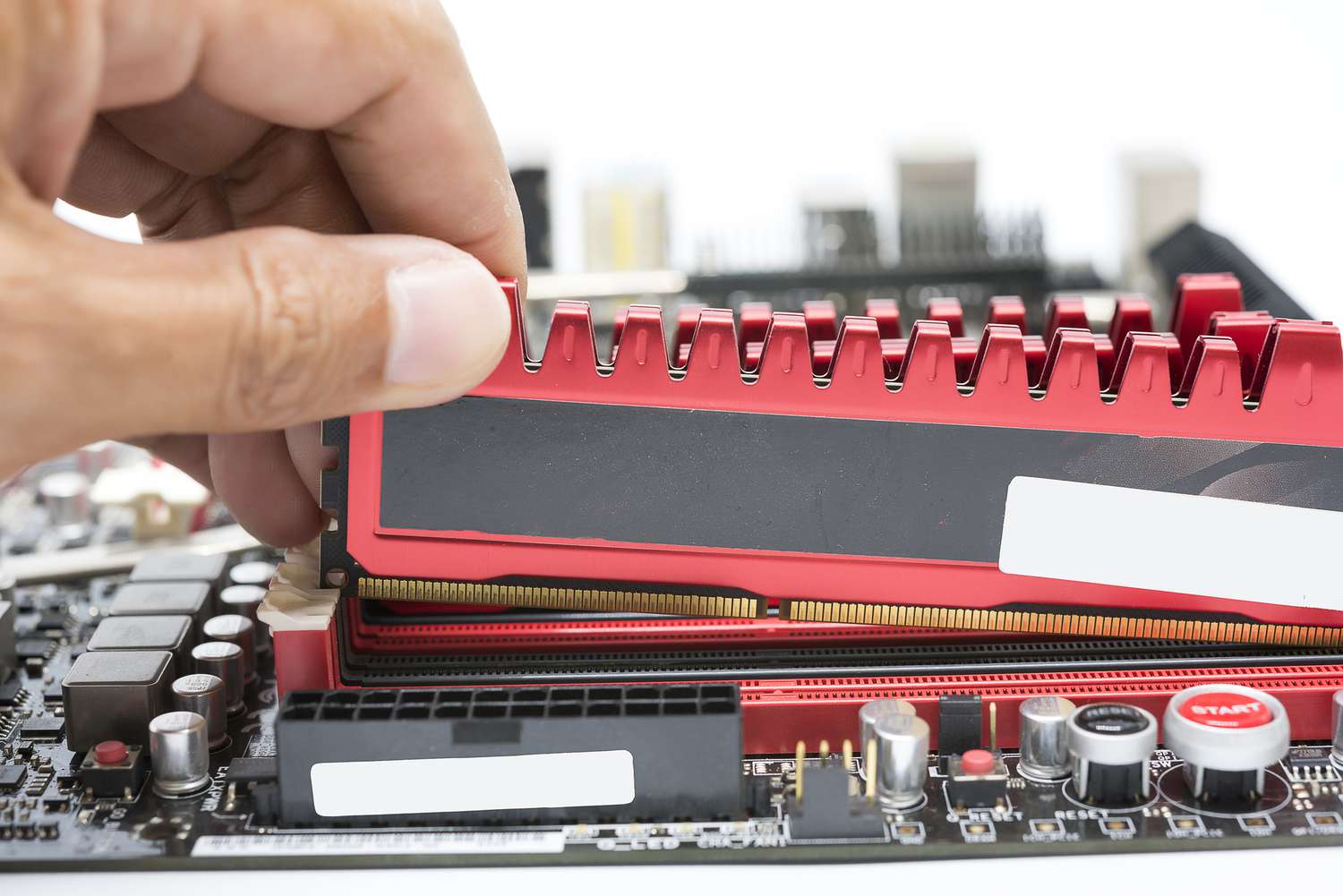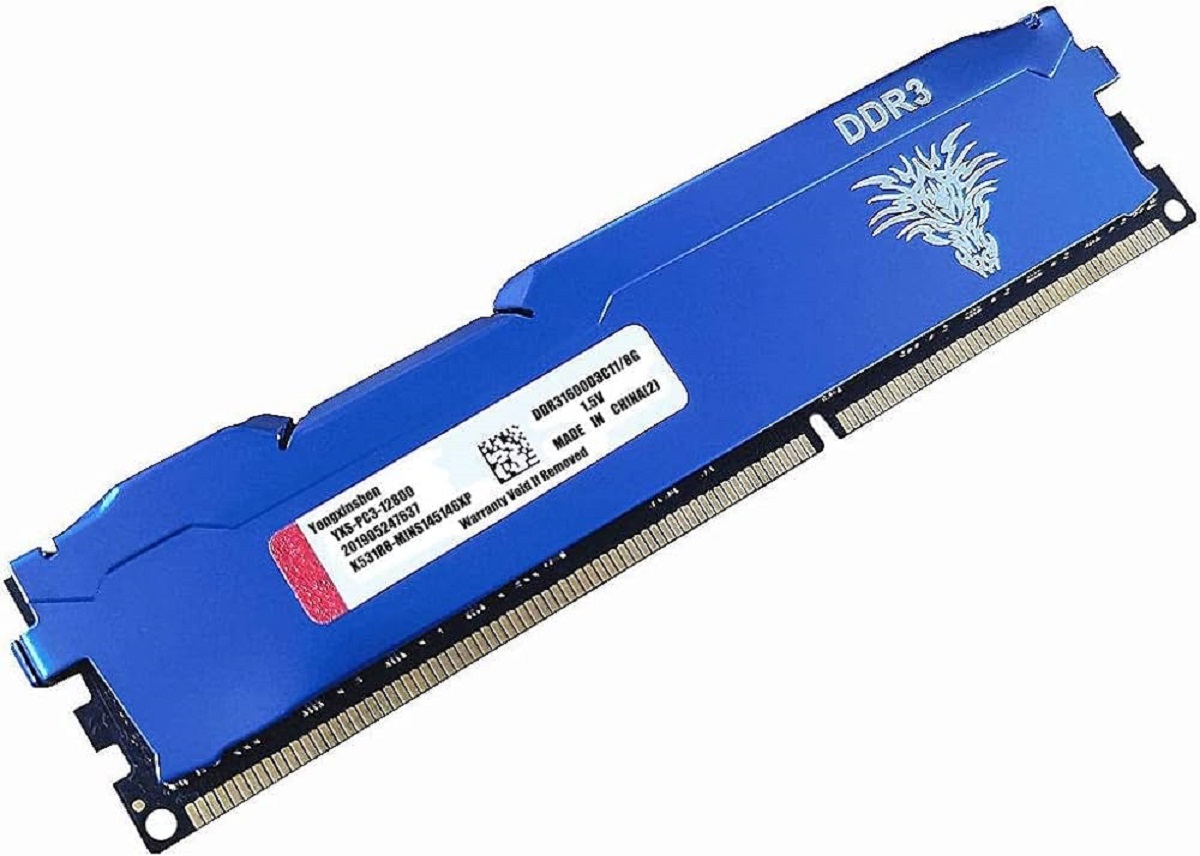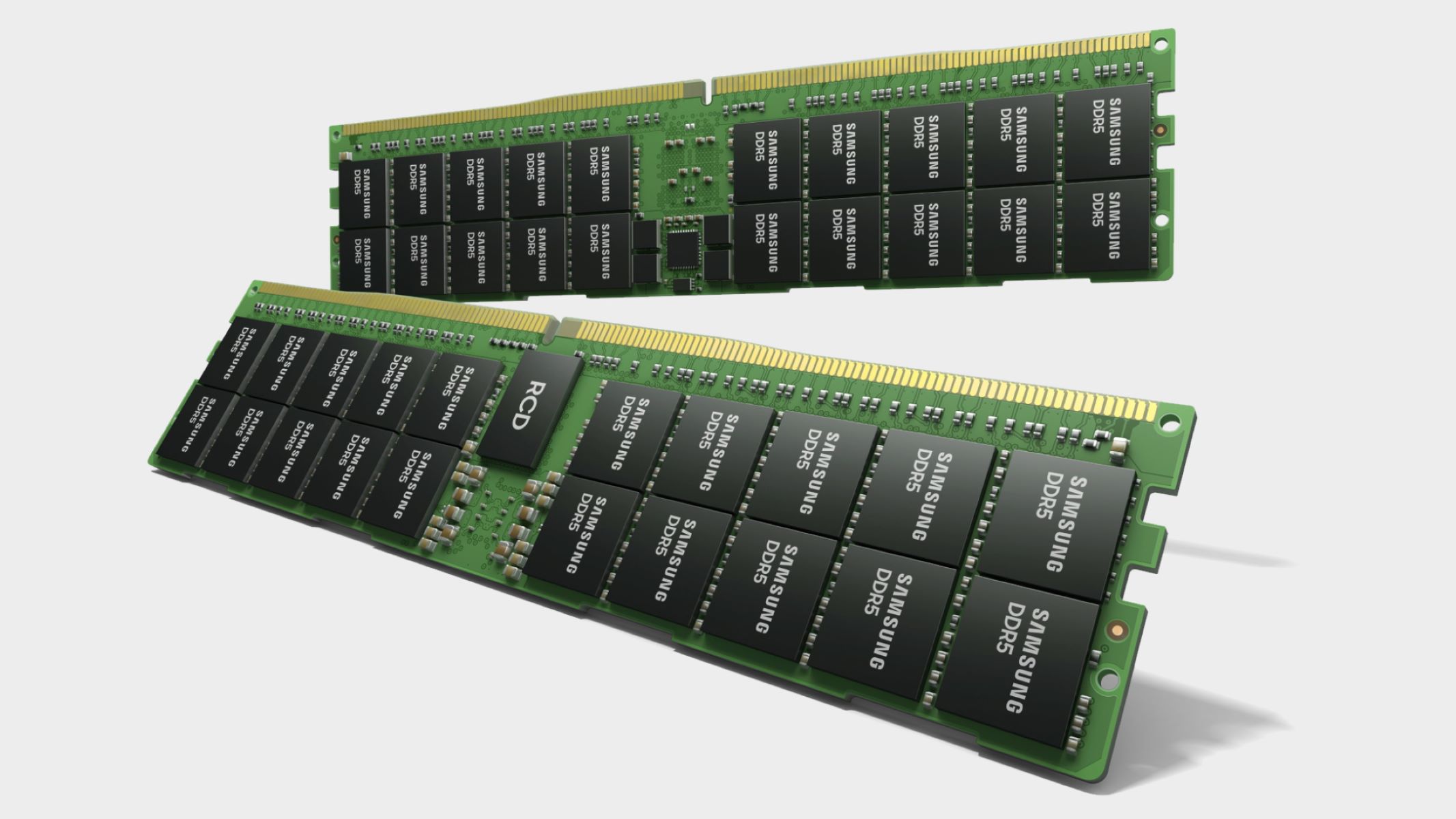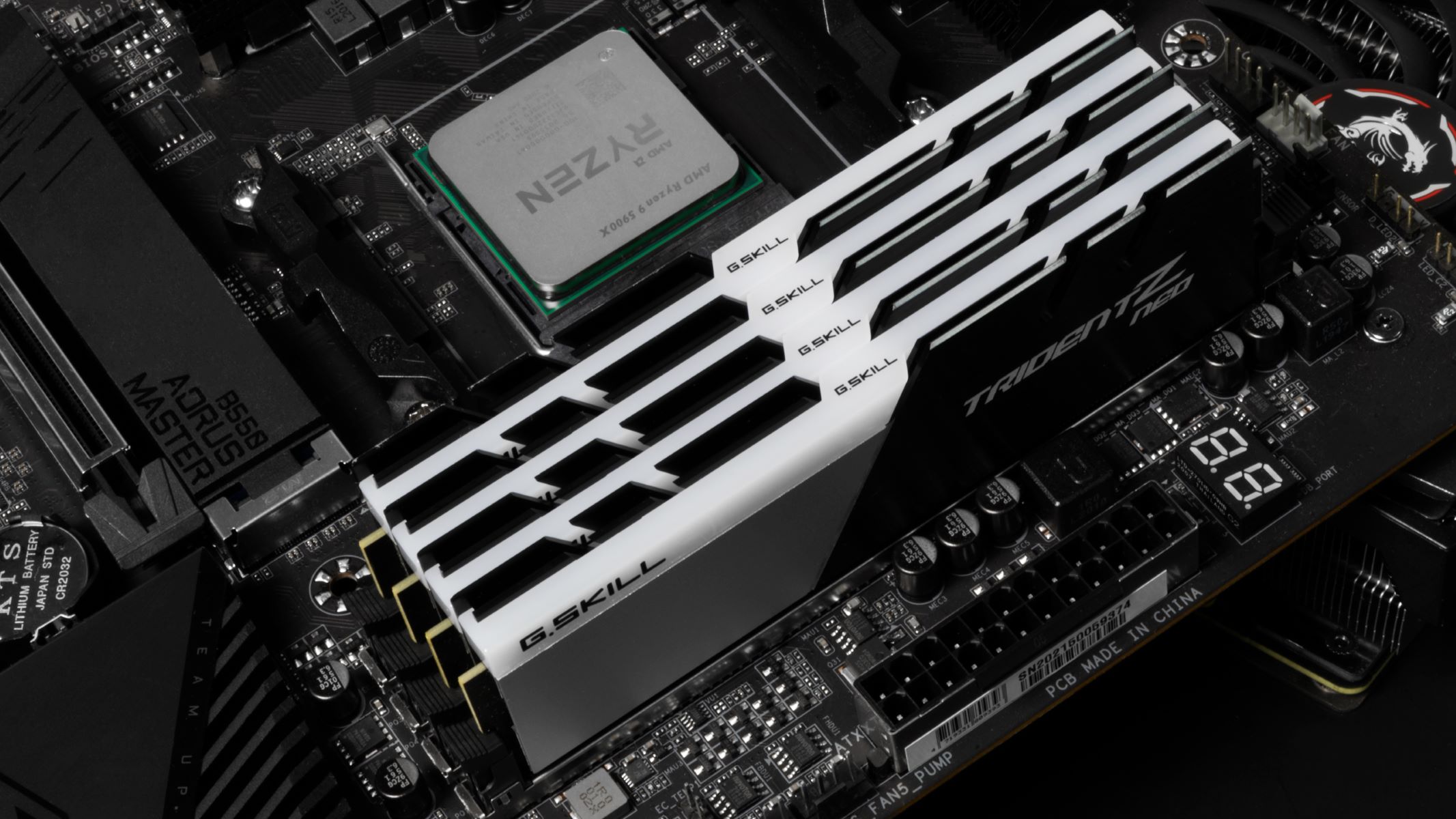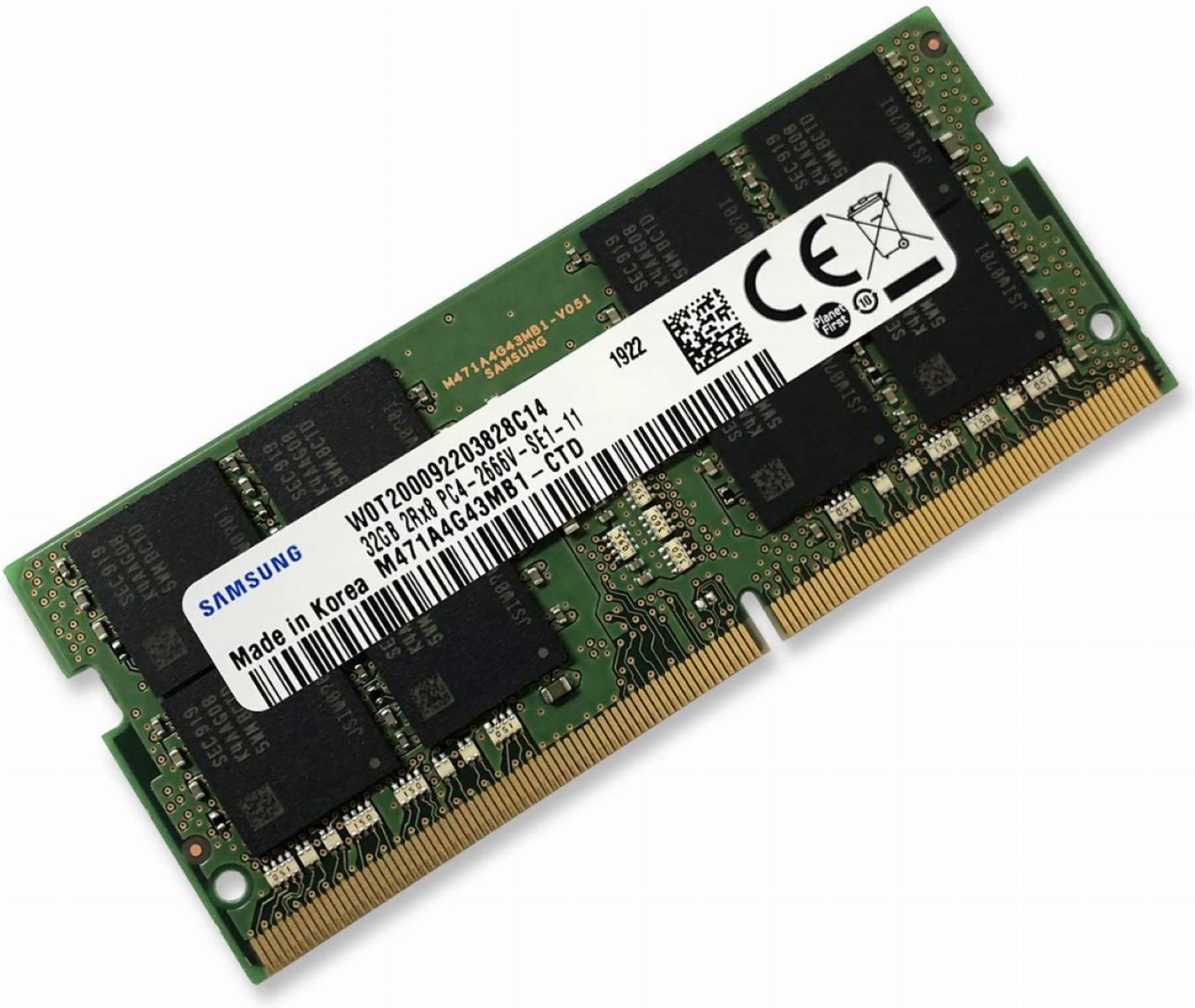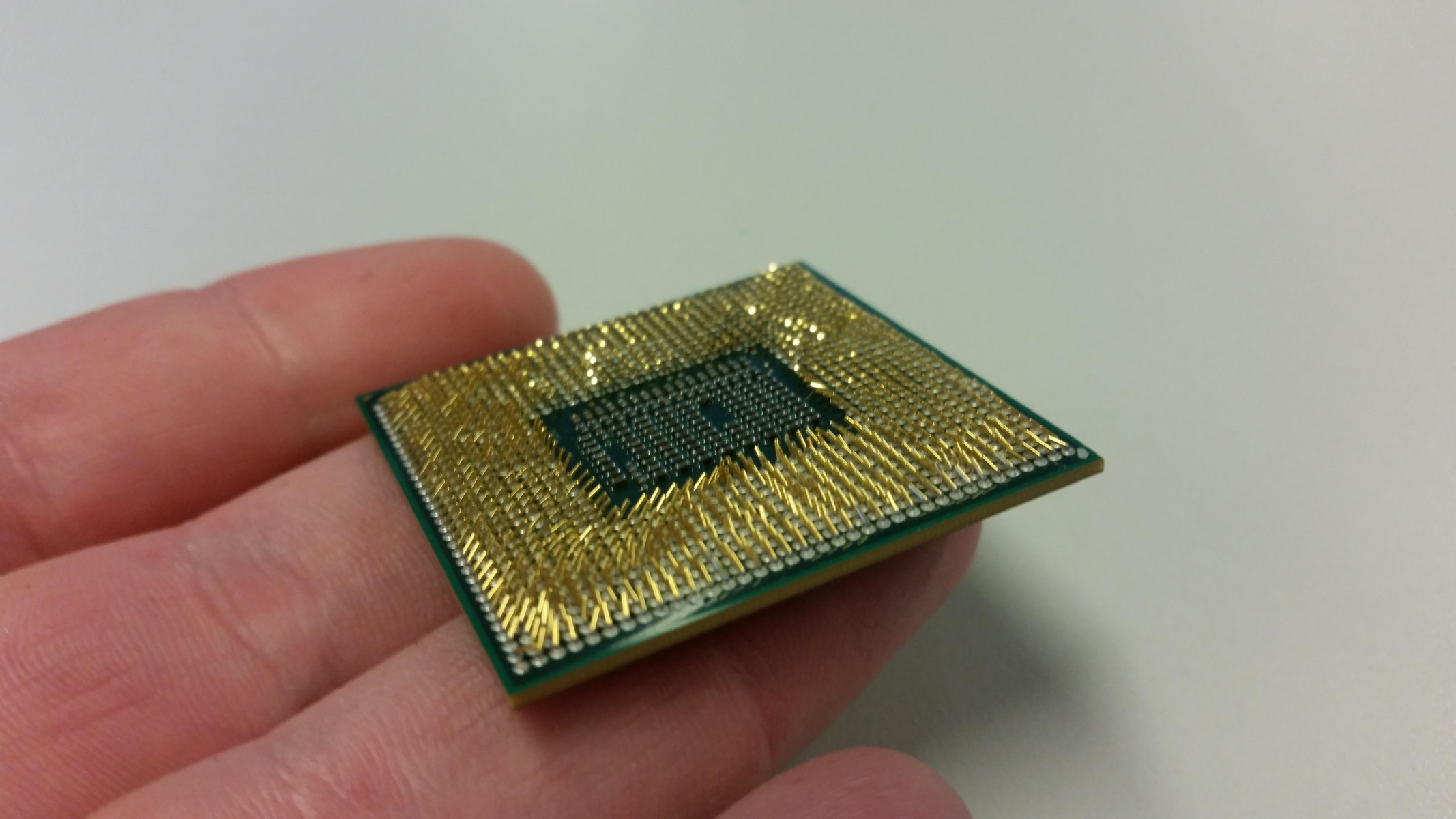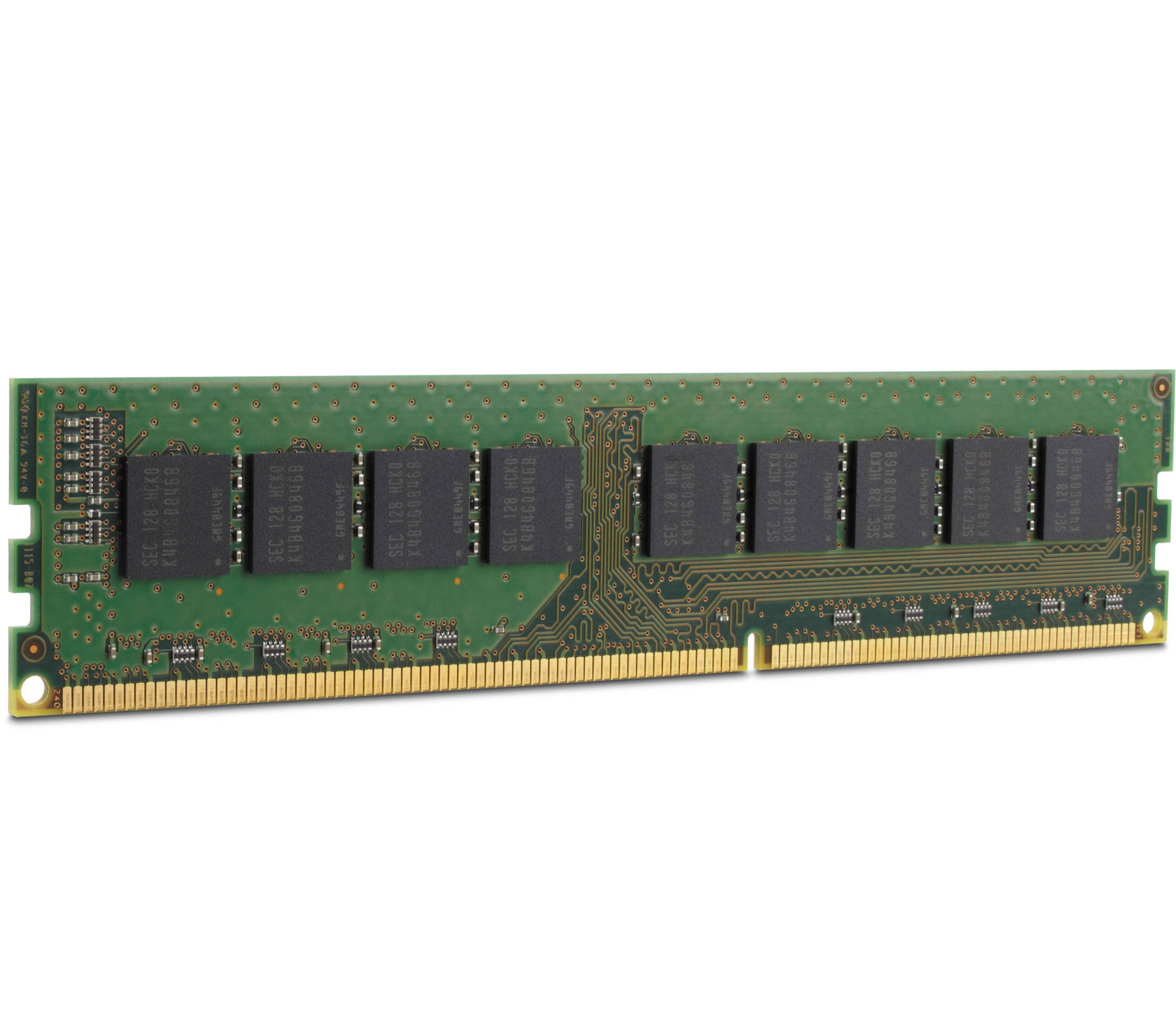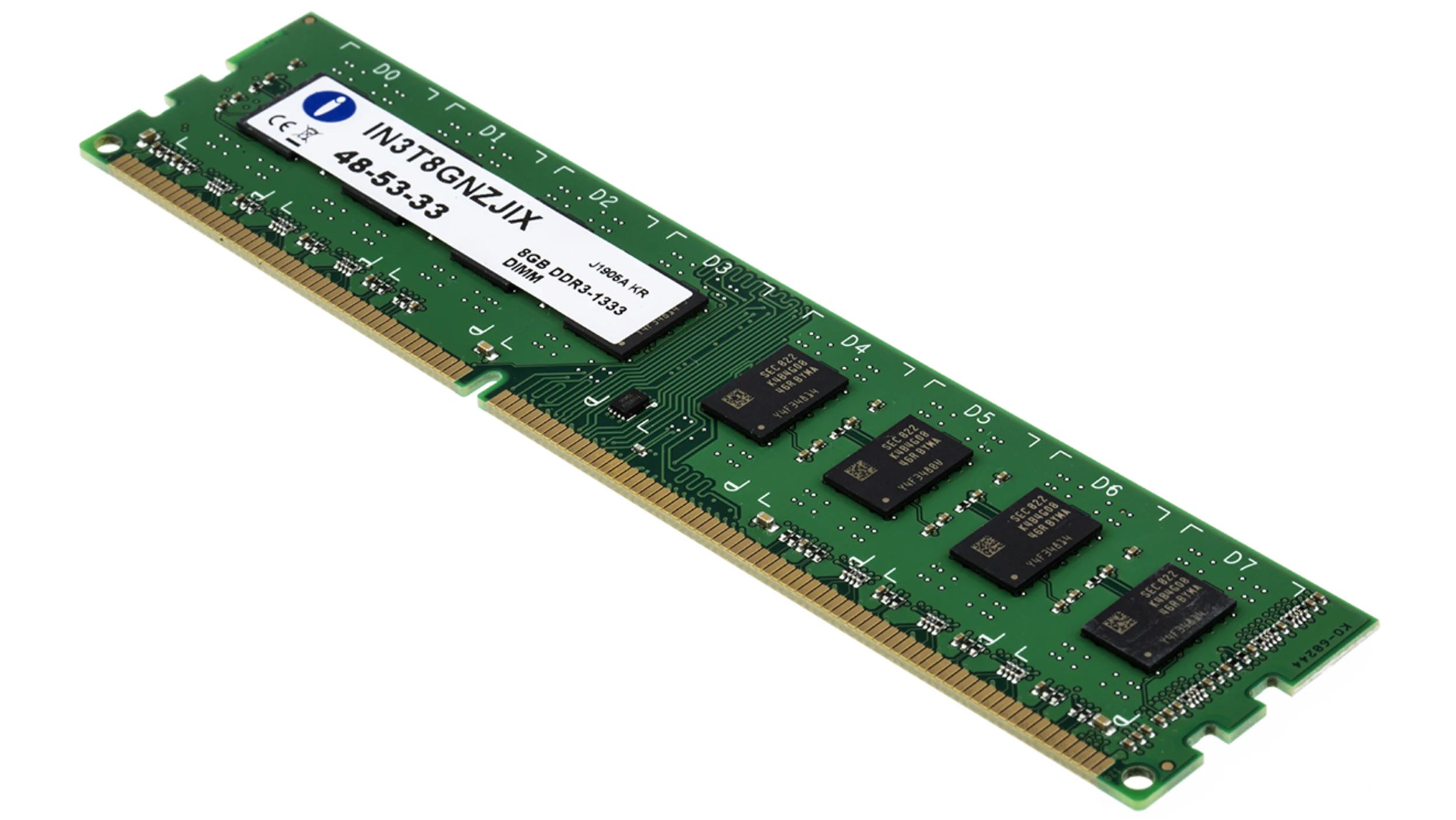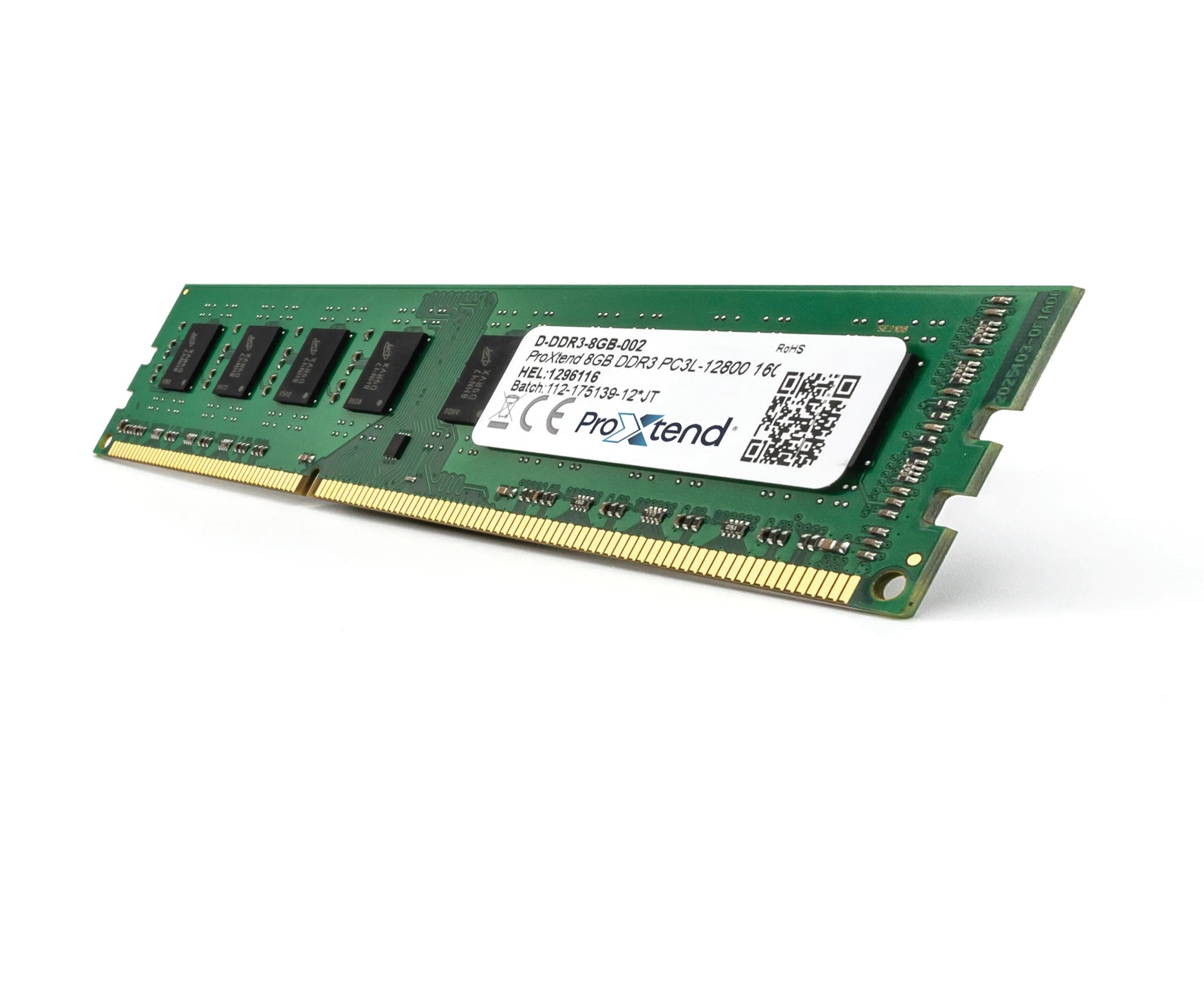Introduction
RAM, or Random Access Memory, is an essential component of a computer system. It plays a crucial role in the performance and efficiency of your machine. Understanding the type of RAM that your motherboard supports is important, as it ensures compatibility and enables you to make informed decisions when upgrading or replacing your system’s memory.
RAM is responsible for temporarily storing data that your computer’s processor needs to access quickly. The more RAM your system has, the more efficiently it can handle multiple tasks and run memory-intensive programs. Upgrading your RAM can significantly boost your computer’s speed and overall performance.
Before diving into the various types of RAM and determining which is compatible with your motherboard, it’s crucial to know that motherboards are designed to support specific types and generations of RAM. The compatibility between the motherboard and RAM ensures seamless operation and prevents any potential compatibility issues.
This article will guide you through understanding RAM and determining what type of RAM your motherboard supports. By the end of it, you’ll be equipped with the knowledge necessary to make informed decisions when it comes to upgrading or replacing your system’s memory.
Understanding RAM
RAM, or Random Access Memory, is a vital component in any computer system. It acts as a temporary storage space for data that the processor needs to access quickly. Unlike the long-term storage provided by a hard drive or solid-state drive, RAM offers high-speed access for faster data retrieval and manipulation.
When you open a program or file, your computer loads the necessary data into RAM to ensure quick and efficient processing. The amount of RAM available determines how many applications and tasks your computer can handle simultaneously without experiencing slowdowns or performance issues.
RAM operates on a different level than your computer’s permanent storage. It functions under a “read-write” system, meaning that data can be both read from and written to RAM. This allows for efficient data manipulation and ensures that your computer can access the necessary information in real-time.
One important aspect to note is that RAM is volatile memory. This means that its contents are lost when the computer is powered off or restarted. Therefore, RAM acts as a temporary workspace for data while your computer is in use, but it does not store data permanently.
The size of RAM is typically measured in gigabytes (GB), with common sizes ranging from 4GB to 32GB or more. The more RAM you have, the more data your computer can store and access quickly, which translates into smoother multitasking and faster program execution.
Upgrading your RAM can significantly improve your computer’s performance, particularly if you frequently use memory-intensive applications such as video editing software, virtual machines, or resource-demanding games. However, it’s essential to understand the compatibility between your motherboard and the type of RAM you plan to upgrade to.
In the following sections, we will explore the various types of RAM and how to determine which type is compatible with your motherboard. Understanding these distinctions will ensure that you make the right choice when it comes to upgrading your system’s memory.
How to Determine Motherboard Compatibility
Before upgrading or replacing your RAM, it’s crucial to determine whether your motherboard supports the type and generation of RAM you intend to use. Here are some steps you can follow to check for motherboard compatibility:
- Identify your motherboard model: To determine the compatibility of your motherboard, you need to find out its specific model. You can typically find this information by checking the documentation that came with your computer or by looking inside your computer case. The motherboard model is often printed directly on the motherboard itself.
- Visit the manufacturer’s website: Once you have identified your motherboard model, visit the manufacturer’s website. Most motherboard manufacturers provide detailed specifications and compatibility lists for their products. Look for a support or product page related to your specific motherboard model.
- Check the specifications: On the manufacturer’s website, locate the specifications or compatibility section for your motherboard model. Look for information regarding the supported RAM types, speeds, and maximum capacity. This will give you an idea of the RAM modules that are compatible with your motherboard.
- Consult the motherboard manual: If you still have the motherboard manual, it can be a valuable resource for determining RAM compatibility. The manual usually includes a section dedicated to the supported memory configurations. Refer to this section to ensure that the RAM modules you plan to install match the specifications outlined in the manual.
- Research online forums and communities: If you’re unable to find the necessary information on the manufacturer’s website or in the manual, consider exploring online forums and communities dedicated to computer hardware. These platforms often have active communities where users share their experiences and provide insights into motherboard compatibility with various RAM modules.
By following these steps, you can determine whether your motherboard supports the type of RAM you intend to use. It’s important to note that motherboard compatibility can vary even within the same model series, so it’s essential to verify the compatibility of your specific motherboard model.
Once you have confirmed the compatibility, you can proceed with upgrading your RAM to enhance your computer’s performance and ensure smooth multitasking and efficient program execution.
Types of RAM
There are several types of RAM available in the market, each with its own characteristics and compatibility requirements. Understanding the different types of RAM can help you make informed decisions when choosing the right memory for your computer system. Here are the most common types of RAM:
- DDR SDRAM: DDR (Double Data Rate) Synchronous Dynamic Random Access Memory is an older type of RAM that is commonly referred to as DDR1. It operates at lower speeds compared to newer generations of RAM and has limited capacity. DDR SDRAM is not commonly used in modern computers since it has been superseded by newer and faster technologies.
- DDR2 SDRAM: DDR2 (Double Data Rate 2) Synchronous Dynamic Random Access Memory is the next iteration of DDR1. It offers increased clock speeds and improved performance compared to its predecessor. DDR2 SDRAM has greater capacity and is more energy-efficient. However, due to its age, it may be challenging to find DDR2 RAM modules in the market.
- DDR3 SDRAM: DDR3 (Double Data Rate 3) Synchronous Dynamic Random Access Memory is a widely used memory type in modern computer systems. It offers higher clock speeds, increased bandwidth, and improved efficiency compared to DDR2. DDR3 RAM modules are readily available and offer various capacity options to suit different computing needs.
- DDR4 SDRAM: DDR4 (Double Data Rate 4) Synchronous Dynamic Random Access Memory is the latest generation of RAM. It provides even higher clock speeds, improved bandwidth, and lower power consumption compared to DDR3. DDR4 RAM is commonly used in modern computers and is available in a wide range of capacities. It offers superior performance for memory-intensive tasks such as gaming, video editing, and 3D rendering.
When considering RAM options, it’s important to ensure compatibility with your motherboard. Most motherboards are designed to support a specific type and generation of RAM. For example, if your motherboard only supports DDR3 RAM, you cannot install DDR4 modules. Refer to your motherboard’s documentation or manufacturer’s website to determine the compatible RAM type and generation.
It’s worth noting that each successive generation of RAM offers improved performance, efficiency, and capacity. If your motherboard supports multiple RAM types, you can consider upgrading to a newer generation to take advantage of the benefits it offers.
Now that you have an understanding of the different types of RAM available, you can make an informed decision when it comes to selecting the right memory for your computer system.
DDR SDRAM
DDR SDRAM, or Double Data Rate Synchronous Dynamic Random Access Memory, is the first generation of DDR technology introduced in the late 1990s. While it is an older type of RAM, it played a crucial role in advancing computer memory technology at the time.
DDR SDRAM operates at lower clock speeds compared to its successors, DDR2, DDR3, and DDR4. It uses a double data rate interface, which means that data is transferred on both the rising and falling edges of the memory clock. This allows DDR SDRAM to achieve higher data transfer rates than traditional SDRAM.
DDR SDRAM is available in various capacities, typically ranging from 128 megabytes to 1 gigabyte per module. However, due to its age, DDR SDRAM modules with larger capacities are less common and may be more challenging to find.
While DDR SDRAM provided significant improvements over previous memory technologies, it has largely been replaced by newer and faster RAM generations. Modern motherboards are typically not designed to support DDR SDRAM, as they are optimized for the faster speeds and capacities offered by DDR2, DDR3, and DDR4.
If you have an older computer system that still utilizes DDR SDRAM, upgrading the memory may improve its performance to some extent. However, it’s important to realize that the gains may be minimal compared to upgrading to a more recent RAM generation.
It’s worth noting that DDR SDRAM modules are physically incompatible with DDR2, DDR3, and DDR4 memory slots. Attempting to install DDR SDRAM into a motherboard that requires a different RAM type will not work and may potentially damage the RAM or the motherboard.
Overall, while DDR SDRAM has paved the way for advancements in computer memory technology, it is now considered outdated and unsupported by most modern computer systems. If you are looking to upgrade your computer’s memory, it is advisable to consider the compatibility requirements of your motherboard and consider newer RAM generations such as DDR4 for optimal performance.
DDR2 SDRAM
DDR2 SDRAM, or Double Data Rate 2 Synchronous Dynamic Random Access Memory, is the second generation of DDR technology. It was introduced as an improvement over the original DDR SDRAM, providing increased performance and efficiency.
DDR2 SDRAM operates at higher clock speeds and offers improved data transfer rates compared to DDR SDRAM. It uses a double data rate interface similar to its predecessor, allowing data to be transferred on both the rising and falling edges of the memory clock. This enhances the overall efficiency and speed of data transfer.
One of the key advantages of DDR2 SDRAM is its increased capacity. DDR2 modules are available in larger capacities than DDR SDRAM, ranging from 512 megabytes to 8 gigabytes per module. This makes DDR2 SDRAM a suitable choice for memory-intensive applications and multitasking.
DDR2 SDRAM modules typically operate at voltages of 1.8V, which is lower compared to the 2.5V voltage used by DDR SDRAM. This lower voltage requirement contributes to improved power efficiency and reduced heat generation.
While DDR2 SDRAM offers notable improvements over its predecessor, it has largely been replaced by newer RAM generations, such as DDR3 and DDR4. The primary reason for this is the continuous advancement in RAM technology, leading to faster clock speeds, increased bandwidth, and larger capacities.
It’s important to note that DDR2 SDRAM modules are physically incompatible with DDR, DDR3, and DDR4 memory slots. Attempting to install DDR2 modules into a motherboard that requires a different RAM type will not work and may potentially damage the RAM or the motherboard.
When considering upgrading your computer’s memory, it’s essential to check your motherboard’s compatibility with DDR2 SDRAM. Many modern motherboards do not support DDR2 memory, as they are designed to take advantage of the faster speeds and improved performance offered by DDR3 and DDR4.
If you have an older computer system that still uses DDR2 SDRAM, upgrading the memory may provide a noticeable performance boost. However, it’s important to evaluate the overall cost-effectiveness of upgrading the RAM on an aging system versus investing in a newer computer with support for the latest RAM technologies.
In summary, DDR2 SDRAM was a significant advancement in computer memory technology, offering improved performance, increased capacity, and better power efficiency compared to DDR SDRAM. However, it has been largely replaced by newer RAM generations and may not be compatible with modern computer systems.
DDR3 SDRAM
DDR3 SDRAM, or Double Data Rate 3 Synchronous Dynamic Random Access Memory, is a widely used memory type in modern computer systems. It is the successor to DDR2 and offers several improvements in terms of performance and efficiency.
DDR3 SDRAM operates at higher clock speeds and provides increased data transfer rates compared to its predecessors. It utilizes a double data rate interface, allowing data to be transferred on both the rising and falling edges of the memory clock. This enhances the overall efficiency and speed of data transfer.
One of the key advantages of DDR3 SDRAM is its increased bandwidth. It offers significant improvement in data transfer rates compared to DDR2, enabling faster access to data and improved system performance. DDR3 modules are available in capacities ranging from 1 gigabyte to 16 gigabytes per module, providing ample space for memory-intensive applications and multitasking.
DDR3 SDRAM operates at lower voltages compared to DDR2, typically at 1.5 volts. This lower voltage requirement contributes to improved power efficiency and reduced heat generation. It allows for greater overall system stability and reliability.
When it comes to compatibility, DDR3 SDRAM is not backward compatible with DDR2 memory slots. However, many motherboards support both DDR2 and DDR3 memory, providing flexibility in upgrading memory without the need for a complete system overhaul. It’s essential to check your motherboard’s compatibility and ensure that it supports DDR3 memory before making any upgrades.
DDR3 SDRAM has become the standard in many modern computer systems, offering a good balance between performance, power efficiency, and cost-effectiveness. It is widely available and compatible with a wide range of motherboards, making it an attractive option for both casual users and enthusiasts.
While DDR3 technology has been widely adopted, newer RAM generations such as DDR4 have been introduced with even higher performance capabilities. However, the benefits of upgrading from DDR3 to DDR4 depend on the specific use case and the applications being run. For most users, DDR3 SDRAM still provides sufficient performance for everyday computing tasks.
If you have a computer system that supports DDR3 memory, upgrading to higher-capacity DDR3 modules or faster clock speeds can provide a noticeable boost in performance and improve the overall responsiveness of your system.
In summary, DDR3 SDRAM offers improved performance, increased bandwidth, and improved power efficiency compared to DDR2. It has become the standard memory technology for many modern computer systems and continues to provide a cost-effective solution for users looking to enhance their system’s memory capabilities.
DDR4 SDRAM
DDR4 SDRAM, or Double Data Rate 4 Synchronous Dynamic Random Access Memory, is the latest generation of RAM technology available for modern computer systems. It is the successor to DDR3 and offers several significant improvements in terms of performance, speed, and efficiency.
DDR4 SDRAM operates at even higher clock speeds and provides increased data transfer rates compared to its predecessors. This allows for faster access to data, improved system responsiveness, and enhanced multitasking capabilities. DDR4 modules are available in various capacities, ranging from 4 gigabytes to 128 gigabytes per module, catering to the memory requirements of both casual users and professionals.
One of the key advantages of DDR4 SDRAM is its increased bandwidth. It offers significantly higher data transfer rates compared to DDR3, enabling faster communication between the memory and the processor. This results in improved overall system performance, especially when running memory-intensive applications or engaging in tasks that require large amounts of data to be processed quickly.
DDR4 SDRAM operates at lower voltages compared to its predecessor, typically at 1.2 volts. This lower voltage requirement contributes to improved power efficiency and reduced heat generation. Lower power consumption helps extend the battery life of laptops and contributes to overall energy savings.
While DDR4 memory offers significant performance advantages, it’s important to note that DDR4 modules are not compatible with DDR3 memory slots. Therefore, upgrading to DDR4 requires a compatible motherboard with DDR4 memory slots. When considering a memory upgrade, it is essential to ensure that your motherboard supports DDR4 before making any purchasing decisions.
DDR4 technology has been widely adopted in newer computer systems and provides a solid foundation for high-performance computing. It is particularly beneficial for tasks that require extensive memory usage, such as video editing, 3D rendering, and gaming. The increased capacity and bandwidth of DDR4 memory modules allow for smoother multitasking and improved system stability.
While DDR4 provides superior performance compared to DDR3, the benefits of upgrading from DDR3 to DDR4 depend on the specific use case and the applications being run. For users engaging in memory-intensive tasks or utilizing the latest software and applications, upgrading to DDR4 can result in a noticeable performance boost.
In summary, DDR4 SDRAM offers significant advancements in performance, speed, efficiency, and capacity compared to its predecessors. It has become the standard memory technology in many modern computer systems and provides an excellent option for users looking to maximize their system’s memory capabilities and optimize overall performance.
Checking Your Motherboard’s Compatibility
Before upgrading or replacing your RAM, it is crucial to determine whether your motherboard supports the type and generation of RAM you intend to use. There are several ways to check your motherboard’s compatibility:
- Identify your motherboard model: The first step is to identify your motherboard model. You can usually find this information by checking the documentation that came with your computer or by looking inside your computer case. The motherboard model is often printed directly on the motherboard itself.
- Visit the manufacturer’s website: Once you have identified your motherboard model, visit the manufacturer’s website. Most reputable motherboard manufacturers provide detailed specifications and compatibility lists for their products. Look for a support or product page dedicated to your specific motherboard model.
- Check the specifications: On the manufacturer’s website, locate the specifications or compatibility section for your motherboard model. Look for information regarding the supported RAM types, speeds, and maximum capacity. This will give you a clear idea of the RAM modules that are compatible with your motherboard.
- Consult the motherboard manual: If you still have the motherboard manual, it can be a valuable resource for determining RAM compatibility. The manual often includes a section dedicated to the supported memory configurations. Refer to this section to ensure that the RAM modules you plan to install match the specifications outlined in the manual.
- Research online resources and forums: If you are unable to find the necessary information on the manufacturer’s website or in the manual, consider exploring online forums and communities specific to computer hardware. These platforms often have active user communities who can provide insights and experiences regarding motherboard compatibility with different RAM modules.
By following these steps, you can determine whether your motherboard supports the type of RAM you plan to use. It is crucial to note that motherboard compatibility can vary even within the same model series, so it is essential to verify the compatibility of your specific motherboard model.
Ensuring compatibility between your motherboard and RAM is vital to avoid compatibility issues and potential damage to your components. Installing RAM that is not compatible with your motherboard can result in your system failing to boot or unstable performance.
Once you have confirmed the compatibility, you can proceed with upgrading or replacing your RAM, knowing that the new modules will be fully compatible with your motherboard. This allows you to optimize your system’s performance and enhance its overall efficiency.
Upgrading Your RAM
Upgrading your RAM can be a cost-effective way to improve your computer’s performance and enhance its overall capabilities. Here are some steps to guide you through the process:
- Determine the type of RAM your motherboard supports: Before purchasing new RAM modules, ensure that they are compatible with your motherboard. Refer to your motherboard’s documentation or visit the manufacturer’s website for information on supported RAM types, speeds, and maximum capacities.
- Assess your current RAM configuration: Check how many RAM slots are occupied on your motherboard and the capacity of the installed modules. This information will help you determine whether you need to replace existing modules or add new ones to increase your system’s memory capacity.
- Choose the appropriate RAM modules: Consider your computing needs and budget when selecting new RAM modules. If you primarily engage in basic tasks like web browsing and document editing, a moderate capacity upgrade may suffice. However, if you handle memory-intensive tasks like multimedia editing or gaming, opting for higher capacity and faster speed modules can provide a significant performance boost.
- Install the new RAM modules: Power off your computer, unplug it from the power source, and open the case. Locate the RAM slots and gently insert the new modules, ensuring they are properly aligned with the slots. Apply light pressure until the modules click into place. Avoid excessive force, as this can cause damage to both the RAM and the motherboard.
- Power on and verify the installation: Once the new RAM modules are installed, close the computer case, plug your computer back in, and power it on. Check the system information or use third-party software to verify that the new RAM modules are recognized and functioning correctly. You should see an increase in the total memory capacity reflected in the system information.
- Test the system stability: After installing new RAM, it’s advisable to run some stability tests to ensure that your system is functioning properly. Use benchmarking software or run memory-intensive applications to put the new RAM modules to the test. This will help identify any potential issues and ensure optimal performance.
It’s important to note that when upgrading your RAM, it is ideal to install modules of the same type, speed, and capacity for optimal compatibility. Mixing different RAM modules can lead to instability and performance issues. If your existing RAM modules are not compatible with the new ones, consider removing the old modules and replacing them entirely to avoid any conflicts.
Upgrading your RAM can provide noticeable performance improvements, particularly when running memory-intensive tasks or multitasking. It allows your computer to handle more data simultaneously, resulting in faster response times and smoother overall operation.
Before making any RAM upgrades, take the time to evaluate your specific needs, budget, and compatibility requirements. By following the steps outlined above, you can successfully upgrade your RAM and enjoy the benefits of an improved computer system.
Conclusion
Understanding the type of RAM that your motherboard supports is crucial for optimizing your computer’s performance and ensuring seamless operation. RAM plays a vital role in how efficiently your system handles tasks and runs applications. Upgrading your RAM can provide noticeable improvements in speed, multitasking capabilities, and overall system responsiveness.
In this article, we explored the different types of RAM, including DDR SDRAM, DDR2 SDRAM, DDR3 SDRAM, and DDR4 SDRAM. We discussed their characteristics, compatibility requirements, and performance benefits. It’s important to ensure that the RAM you choose is supported by your motherboard to avoid any compatibility issues.
We also discussed the importance of checking your motherboard’s compatibility before upgrading or replacing your RAM. Identifying your motherboard model, visiting the manufacturer’s website, and consulting the motherboard manual are all essential steps to determine the supported RAM types, capacities, and speeds.
Once you’ve confirmed compatibility, upgrading your RAM involves choosing the appropriate modules, installing them correctly into the RAM slots, and verifying the installation. Following these steps will help you achieve a successful RAM upgrade and enjoy the improved performance of your computer system.
Remember that upgrading your RAM should be done in conjunction with considering other hardware components and optimizing system settings. RAM is just one aspect of overall system performance, and addressing other factors like CPU, storage, and software configuration may also contribute to a more significant performance improvement.
In conclusion, understanding the type of RAM your motherboard supports and upgrading your RAM accordingly can greatly enhance your computer’s performance and productivity. By ensuring compatibility and selecting the right RAM modules, you can experience smoother multitasking, faster program execution, and an overall better computing experience.







